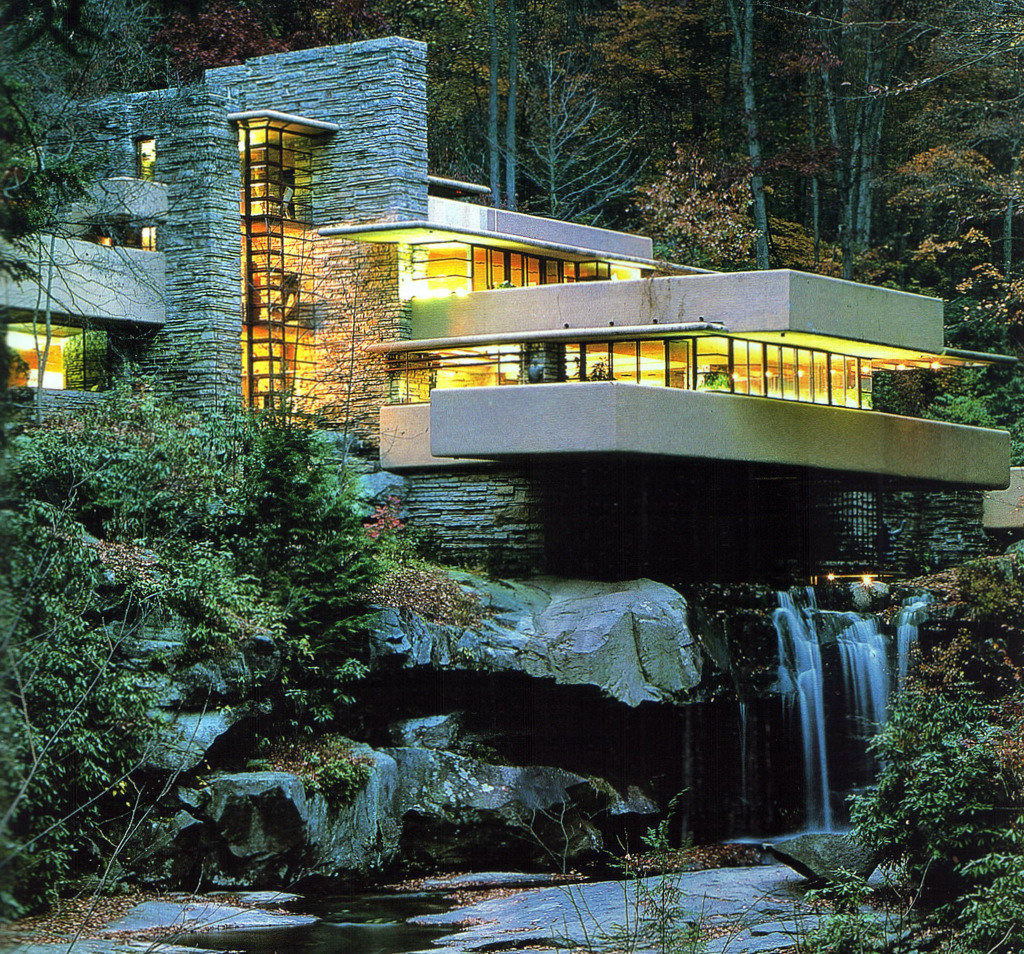Table Of Content

Commissioned by Edgar J. Kaufmann Sr., the Pittsburgh department store magnate who had commissioned Frank Lloyd Wright about a decade earlier to build Fallingwater in Pennsylvania, the house was designed as a desert retreat from harsh winters. Constructed as a series of horizontal planes that seem to float over glass walls, the house seems to absorb the mood of the surrounding desert. So exacting were the standards of the owners and architects that when, in the course of the restoration, a missing stone wall had to be reconstructed a defunct Utah sandstone quarry was re-opened to secure matching stone. The first batch of stone that arrived was not a perfect match, but a second quarry did the trick.
More About Richard Neutra
Jonas Kaufman Withdraws from Remaining 'Werther' Performances at Royal Opera House - OperaWire OperaWire - OperaWire
Jonas Kaufman Withdraws from Remaining 'Werther' Performances at Royal Opera House - OperaWire OperaWire.
Posted: Fri, 30 Jun 2023 07:00:00 GMT [source]
Even before my first visit to Palm Springs, the building I most wanted to see was Richard Neutra's Edgar Kaufmann Residence. I knew the 1947 photos of the house by architectural photographer Julius Shulman which are among most famous and widely known architectural images of all time. Architectural historian John Crosse assembled an 82-page bibliography citing over 150 published articles on the house (most accompanied by Shulman photos) beginning with the house's completion through Neutra's death in 1970. But the house settled into obscurity with only 70 articles published about it after 1970 until the house was purchased and restored by Beth and Brent Harris in 1993. Since their restoration of the house (completed in 1995) there have been close to 275 articles about the Harris' efforts and those of their architects, Leo Marmol and Ron Radziner. Material choices in the Kaufmann House also reflect Neutra’s innovative approach to architecture.
Lonely Planet's must-see attractions
I arrived at the former Ayeroff Brothers store, on La Cienega, to find that it had just been knocked down for a residential development. ” Increasingly, the article implied, the neighbors were envious, rather than scornful, of the Neutra on the block. That same year, Life published one of Julius Shulman’s now legendary photographs of the Kaufmann House—a dream vision of postwar leisure, with Liliane Kaufmann lounging by the pool as the Palm Springs sun sets behind desert mountains. In this same period, John Entenza, the editor of the magazine Arts & Architecture, launched the Case Study program, featuring designs for model progressive homes. Neutra, rigorously trained in engineering, made the Health House a tour-de-force demonstration of his skills. In effect, he served not only as the architect but also as the contractor and the site manager.
Julius Shulman
With a copy of Thomas S. Hines’s authoritative 1982 book, “Richard Neutra and the Search for Modern Architecture,” seeking out more than a hundred local structures. I spoke to several original owners, ranging in age from eighty-four to a hundred and two. Julius Shulman’s photographs, mainly the dusk shot from the southeast overlooking the pool with the mountains in the background, allowed people worldwide to view the house. The large amount of publicity surrounding the Kaufmann House constituted a turning point in the marketing and consumption of architecture and lifestyle. The plan leaves spaces for the courtyards on the periphery of the plan, creating a system of privacy appropriate to the specific occupant in the space; hosts, children, guests, servants, etc. The living and bedroom spaces are organized around a circulation system with terraces, courtyards, and walkways that tie the arms back into the central living room and serve as paths allowing different social groups to interact within the center of the house.
Richard Neutra
Kaufmann, a notorious womanizer, completed the desert house as his marriage disintegrated. In the early 1950's, Liliane Kaufmann commissioned Wright to design another house in Palm Springs on the north side of the property where the Neutra house sits. Named "Boulder House," as confirmed by Edgar Kaufmann Jr. in his book "Fallingwater Rising" this commission was to be a home for Liliane Kaufmann who could no longer live with her philandering husband.

Some critics would rank him below Rudolph Schindler, the other great Austrian modernist in Los Angeles, who helped bring Neutra to the city and later fell out with him. Neutra left behind no signature landmark on the order of the Guggenheim Museum or the Salk Institute. One project in which he invested particularly high hopes—a public-housing complex called Elysian Park Heights—stirred reactionary ire in the fifties, and was never built. Yet the fact that Neutra did his best work in domestic spaces should not detract from his significance.
A PROFESSIONAL, LICENSED AND INSURED CALIFORNIA ARCHITECTURAL AND INTERIOR DESIGN CORPORATION

Manuel and Abrana Aréchiga, who were among the last holdouts in the villages, were escorted off the property; their daughter, Aurora Vargas, was carried out by force. (The phrase “cancer of socialism” was used.) At a hearing the following year, Wilkinson declined to discuss his political affiliations, hastening the demise of the city’s entire public-housing effort. If the Health House had merely received a flurry of publicity in Lovell’s column, Schindler might have felt no lasting bitterness. As Thomas Hines has argued, the real affront came in 1932, when the epoch-making “Modern Architecture” show at the Museum of Modern Art omitted Schindler while saluting Neutra as a major talent. Schindler took to calling his former friend a “go-getter type” and a “racketeer.” Neutra, for his part, felt that he had become the target of irrational resentment. Ultimately, perpetuating this stale contest of male egos conceals the myriad ways the architects influenced each other and thrived in a sympathetic bohemian culture.
AD Classics: Kaufmann House / Richard Neutra
To help restore the desert buffer Neutra had envisioned for the house, the Harrises also bought several adjoining plots to more than double the land around the 3,200-square-foot (300 m2) house. The Kaufmann House, or Kaufmann Desert House, in Palm Springs, California, was designed by Richard Neutra in 1946. It was one of the last domestic projects conducted by the architect, but it is also arguably one of his most famous homes. The garden permeates almost inadvertently throughout the house with smooth oscillations.
Read Reviews from Los Angeles Homeowners Like You
I heard a different perspective from the architect Elizabeth Timme, who lives in the Neutra Colony and is the co-founder of a design nonprofit called LA Más. Much of her work is taken up with devising affordable-housing initiatives, and her home has given her inspiration. In a very different political climate, a reduced version of Elysian Park Heights might have become the verdant, nourishing community of which Neutra dreamed. After entering the house, to the right is the dining and main living spaces with views eastward out to the pool. Northeast of the living space is the primary suite, slightly offset from the central axis to provide privacy for the bedroom and open the view for the living space. That’s why the Desert House, built in 1946 by Austrian-born architect Richard Neutra for retail tycoon Edgar J. Kaufmann, stands out all the more.
Perhaps the finest of his public buildings is the Claremont United Methodist Church, where the San Gabriel Mountains are framed by plate-glass windows behind the altar. Neutra office complexes, medical facilities, and storefronts are scattered around Southern California, ranging in appearance from the nondescript to the decrepit. The Hughes Auto Showroom, in Toluca Lake, now houses Universal Smog and Repair, which looks drab but gets good reviews on Yelp.
When the windscreens are not required, louvers can be adjusted to open up to the views. The Los Angeles Times and its panel of experts named it one of the best houses of all time in southern California in 2008. Neutra’s sleek glass, steel and Utah stone design was considered radical at the time, paving the way for the west coast concept of “indoor outdoor” living. At the time of construction, the focus of the house was the vast desert terrain outside – in the years since, southern California’s suburban sprawl has caught up to the property. The home consists of glass walls that slide open to a number of terraces or pool, garden and desert views. A covered rooftop living room with a view of the mountains is protected on the sides by adjustable louvres.
The lower level of the house, the living room, follows an open plan that leads out to the patio and swimming pool. It’s outside near the pool that one begins to understand the spatial organization of the overlapping planes and the pilotis that support the cantilevering volumes. The house last went on sale in 2008, with Christie’s auctioning the house as a work of art for $25m. The house sold for $19.1m, but the sale fell through, according to Palm Springs Life. With five bedrooms and six full baths at 3,162 sq ft, the house sits on more than two acres and includes a large wood deck, tennis court and lush lawn surrounding the famous pool.
Key architectural features of the Kaufmann House include its flat, extending rooflines that provide shade and cooling in the desert heat and its expansive glass walls, which dissolve the barriers between indoors and the natural world outside. The use of sliding glass doors and moveable wall panels allows the living spaces to be entirely open to the outdoors, a revolutionary concept emphasizing the therapeutic benefits of living in close contact with nature. The Kaufmann House is celebrated for its distinctive design, which masterfully integrates the building with its desert surroundings while maintaining a functional elegance. The house is structured as a series of horizontal planes that seem to float against the rugged backdrop of the San Jacinto Mountains. The floor plan is expansive and open, typical of Neutra’s work, promoting a seamless flow between the interior and exterior spaces.


No comments:
Post a Comment